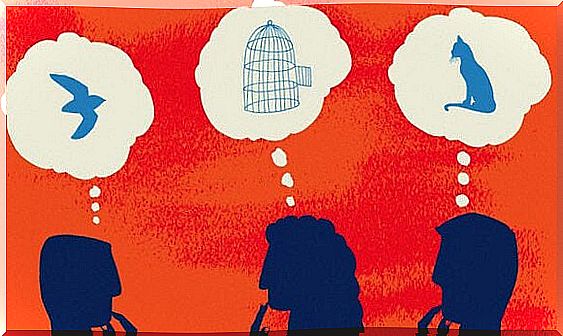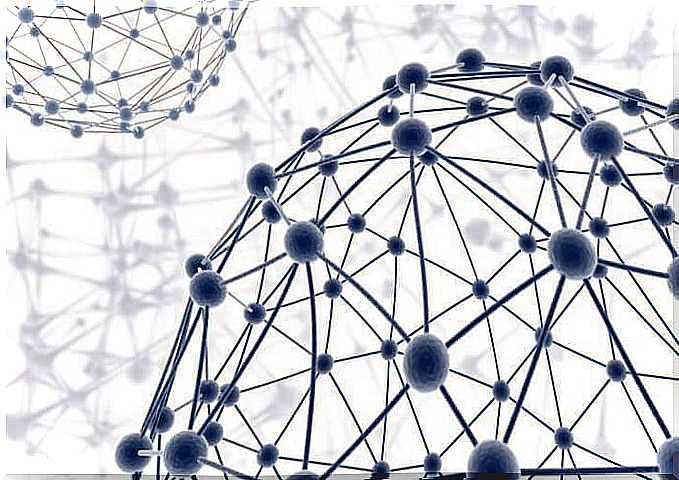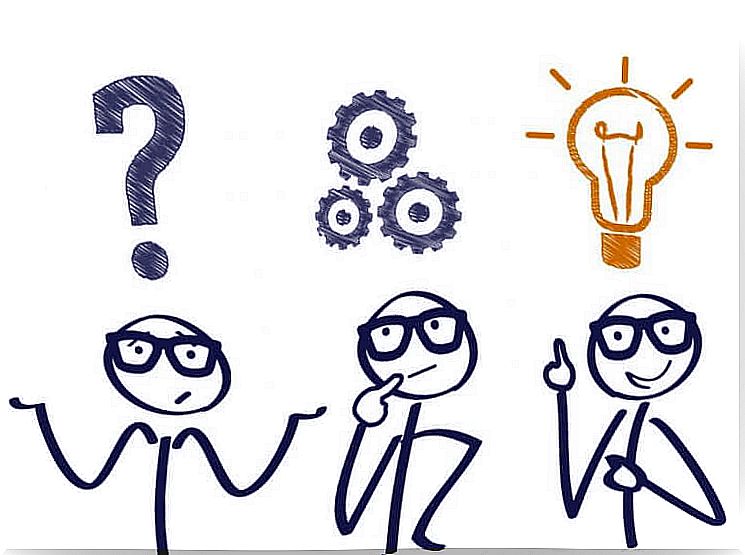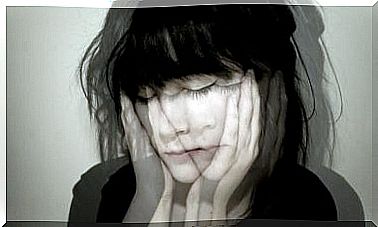The Theory Of Mind: The Starting Point Of Empathy

The theory of mind or ToM (for its acronym in English) refers to the ability to represent our own mind and that of others. What allows us to interpret and predict behaviors through the mental states that we attribute. These mental states can be feelings, thoughts, beliefs, desires, etc. To understand this, let’s go with a simple example.
Imagine that you look out the window and see your neighbor coming out through the portal, immediately afterwards he feels his pockets; then, he turns around and back into his home. You have probably had no problem understanding his behavior, and you have inferred that he has forgotten something. This is because you have managed to enter his mind and interpret his behavior. This is the capacity that in psychology is addressed under the umbrella called theory of mind.
The theory of mind as a conceptual system
The ToM comes from the current of constructivism, in which the human being is seen as a scientist who creates intuitive theories of a reality based on concepts. For this reason, the ToM starts from the basis that all notions and ideas about the mind form a great conceptual system. We say that something is a conceptual system when when defining it, instead of having an explicit definition, we have a network of interrelated concepts that define it.

There are two basic fundamental aspects to understand this conceptual system:
- Its interpretive character: we talk about the concepts we use to represent the mental state. It would be the content that gives us the resources to build mental reality.
- Its inferential character: all the logical relationships between the concepts would enter here. These relationships lead us to be able to explain and predict future behaviors through cause and effect.
Then we can define the theory of mind as a cognitive system that, through conceptual support and inference mechanisms, fulfills the function of managing, interpreting and predicting behavior. From this definition it can be deduced that the mind is what mediates between perception and action: if we manage to represent an individual’s mind, we can infer their behavior.
The mind as a mediator of behavior
But here comes the question, how does the mind mediate between perception and action and that we can infer it? Understanding this is important to understand how we are able, just by intuiting a person’s thoughts, to anticipate their behavior. The psychologist Rivière, together with his colleagues, developed a causal theory of ToM that sought to explain this.
According to this theory, everything begins because through perception we generate beliefs about reality. These beliefs together with our educational and biological dispositions would generate desires; desires that in turn would modify our beliefs to favor their fulfillment. And this interaction between beliefs and desires would give rise to a series of behaviors in order to fulfill the wishes.
This model has a deficit: it is too simplistic to explain the reality of the production of behavior. But it is not necessary to see it from the scientific perspective, since we look for the reasoning that the brain does, not the reality: it seems that this is the theory that our brain uses to interpret and anticipate our own behavior and that of others. You may lack precision and that will lead you to fail on occasion, but it is a quick shortcut that hits a great deal.

Development of the theory of mind
ToM would not be a capacity that we would have from birth, rather it would be a way of functioning with which most of us would be born in potential ; that is to say, with a kind of pre-installation. This pre-installation, speaking in computer terms, to become an installation would need stimulation in certain sensitive periods of our development.
The age of appearance of the theory of mind – in which the installation is completed – is estimated between 4-5 years, when children begin to solve the “false-belief” tests. This ability does not appear until these ages because the child must first develop a series of concepts.
The child to be able to use the ToM must develop two aspects:
- An integrated idea of wishes-beliefs: the child must understand that people govern their behavior through their own wishes and beliefs. Referring to this you have to learn that beliefs may not be true and wishes may not be fulfilled.
- That there is a subjective situation in front of an objective reality: the child must understand that the behavior is governed by the subjective evaluation of reality. This way you can think about the existence of false beliefs and reason from them.
Furthermore, once the theory of mind is developed, it does not mean that it is a passive process of the human being. This ability influences the development of other skills, some very necessary for people; among them, empathy. When the child begins to understand the beliefs and desires of others, it is when he begins to correctly put himself in the shoes of others: an essential aspect for a good development of empathy.









